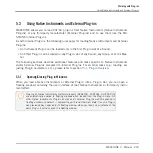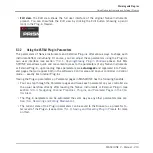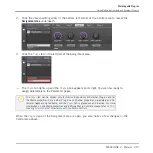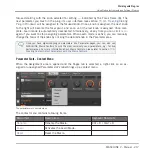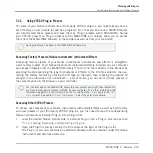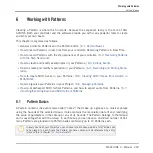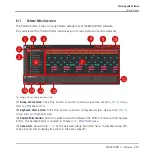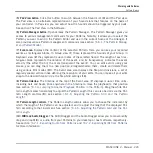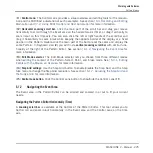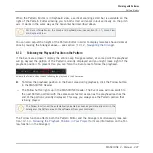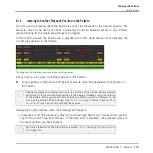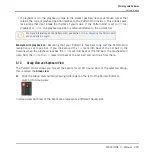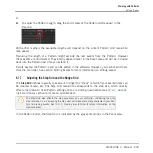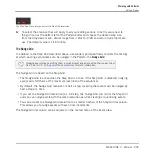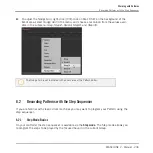
6
Working with Patterns
Creating a Pattern is where the fun starts, because the sequencer really is the core of MA-
SCHINE. Both your controller and the software provide you with many powerful tools to create
and edit your own beats.
This chapter is organized as follows:
▪
General points on Patterns and the Pattern Editor:
.
▪
How to record Patterns in real time from your controller: Recording Patterns in Real Time.
▪
How to record Patterns with the step sequencer of your controller:
.
▪
How to create and modify events/notes in your Patterns:
.
▪
How to create and modify modulation in your Patterns:
6.4, Recording and Editing Modu-
▪
How to create MIDI tracks in your Patterns:
6.5, Creating MIDI Tracks from Scratch in
▪
How to organize your Patterns in your Project:
▪
How to import/export MIDI to/from Patterns, and how to export audio from Patterns:
Importing/Exporting Audio and MIDI to/from Patterns
.
6.1
Pattern Basics
A Pattern contains the events (also called “notes”) that make up a groove or a musical phrase
using the Sounds of the selected Group. It also contains the modulation data (if any) modifying
the value of parameters in that Group or any of its Sounds. The Pattern belongs to that Group
and is saved together with the Group. In each Group you can have an unlimited number of Pat-
terns. Patterns are grouped into Pattern banks containing up to 16 Patterns each.
In every Scene of your Project you can choose for each Group which of its Patterns has
to be played. In each Scene the Pattern you have chosen will be referenced by a Clip
(more on this in chapter
).
Working with Patterns
Pattern Basics
MASCHINE 2 - Manual - 222



